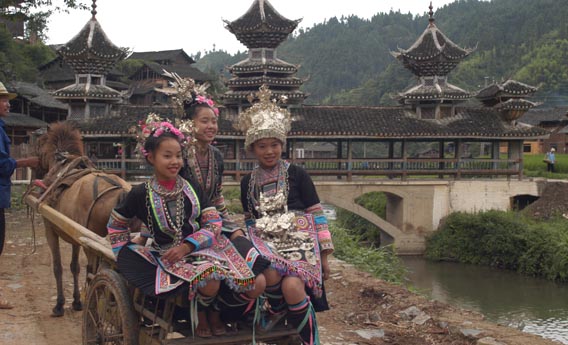The Dong Singers

Though perhaps more famous for its cultivated singing styles, China is also rich in a wide range of traditional folk song. Common among the Han (comprising more than 90 percent of the population), as well as China’s various minority populations, is a long history of unaccompanied—or lightly accompanied—singing directly connected to various rituals of life and calendar events.
The Dong people, one of China’s 55 acknowledged non-Han minorities, have long been considered one of the nation’s most musical minorities. Numbering more than 2.5 million, the Dong live mainly in the Guizhou, Hunan, and Guangxi provinces in southwestern China, maintaining a way of life geographically and culturally removed from the Chinese mainstream.
Both solo and communal singing has long been an active part of Dong life, from casual drinking songs to formal gate-barring rituals—a 1,000-year-old tradition where festive-clad villagers confront prospective visitors with local rice wine to ensure that their intentions are peaceful.
In any case, what has made the vocal tradition particularly important to the Dong has been the people’s lack of a written language. Until the 1950s, when the Chinese government imposed pinyin Romanization on their spoken language, the Dong had remained a strictly oral culture.
Dong singing remains most distinctive today in its ensembles called da ge (or “big song”), named not for a song’s duration, but for the forces required. Though much of the texture is in unison—especially in children’s choruses—the most characteristic sonorities emerge from Dong polyphony, where techniques of sound imitation feature singers vividly illustrating the sounds of nature. From pipa ballads and hearty drinking songs to solemn historical narratives and courtship rituals, Dong music still recalls a pre-literate culture in which every aspect of life was expressed in song.
Related reading: Village on the Edge of Time


